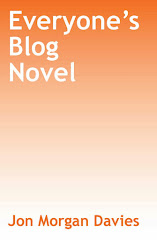Figuring I'd follow up Basil Copper's history of werewolves with a literary history of them, I picked up Frost's tome. Frost's book, written nearly three decades later, adds the seventies, eighties, and nineties to the mix of literary works under discussion. Still, it wasn't quite what I was hoping for.
It's exhaustive, to be sure. There may be a few works he fails to mention, but this is essentially plus two hundred pages of titles and plot summaries. Call it an annotated bibliography in text form, and that's essentially what you'd have. That's not necessarily bad, and Frost is better, I think, at plot summaries than Copper. He knows where to stop, not to get so full into the plot that your eyes glaze over, unlike Copper who at times rehearses every tiny details. In this sense, the writing seems more lively in Frost's book.
But what I guess I was wanting, and will still have to find somewhere else if I return to the werewolf theme (which is unlikely in the near future), is more analysis. Why are some people interested in these creatures, and what does that say about humanity? Not much of that is here.
The closest Frost gets to that is in the opening chapter, which discusses where the myth comes from. He rehearses some of the same details as in the more interesting sections of Copper's book, but in a more abbreviated and scholarly tone, which in the case of this more historical material makes it less interesting than Copper's text. We learn that the werewolf has some antecedents among the ancients and that werewolves were a fear among people in the Middle Ages, who assumed they were witches (the idea that a werewolf had fur on the underside of human skin is repeated--unfortunate for those who were tested, for the innocent were dead, and the guilty, well, no one seemed to ever have fur under the skin). And we learn a bit about true werewolves, or rather, ideas of werewolves in contemporary time: people who think they are wolves, psychological problems, eaters of flesh, and so on.
Next, Frost turns his attention to studies of werewolves, where some other useful information might been gleaned and where, if I were motivated to review the chapter more closely, I might find the literary and cultural analysis I was wishing for. Then follow chapters on novels and stories over the various periods, especially from the Victorian era on, and he finally closes with a chapter on anthologies of werewolf stories. If you can't get enough werewolf reading, Frost's would be a good place to start. You'll probably find enough to last a lifetime or at least a decade.
Sunday, July 3, 2011
On "The Essential Guide to Werewolf Literature" by Brian J. Frost ***
Labels:
Books,
Brian J. Frost,
Nonfiction,
Three-Star Nonfiction
Subscribe to:
Post Comments (Atom)






No comments:
Post a Comment